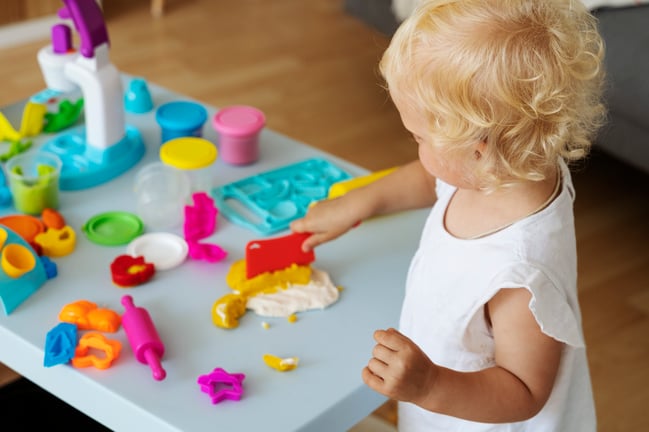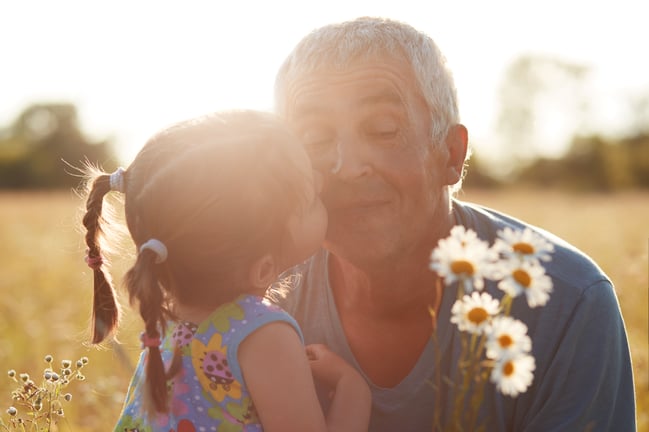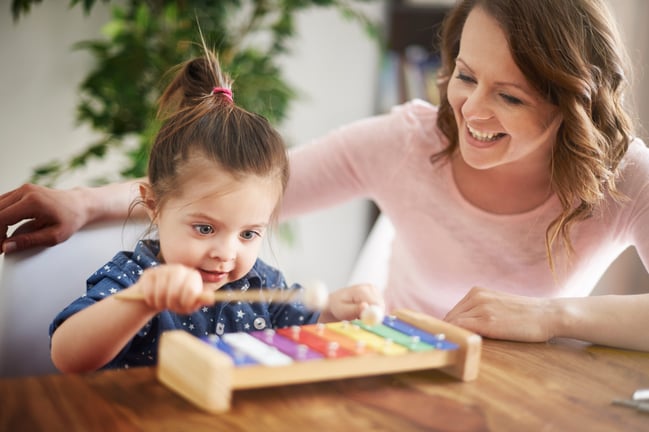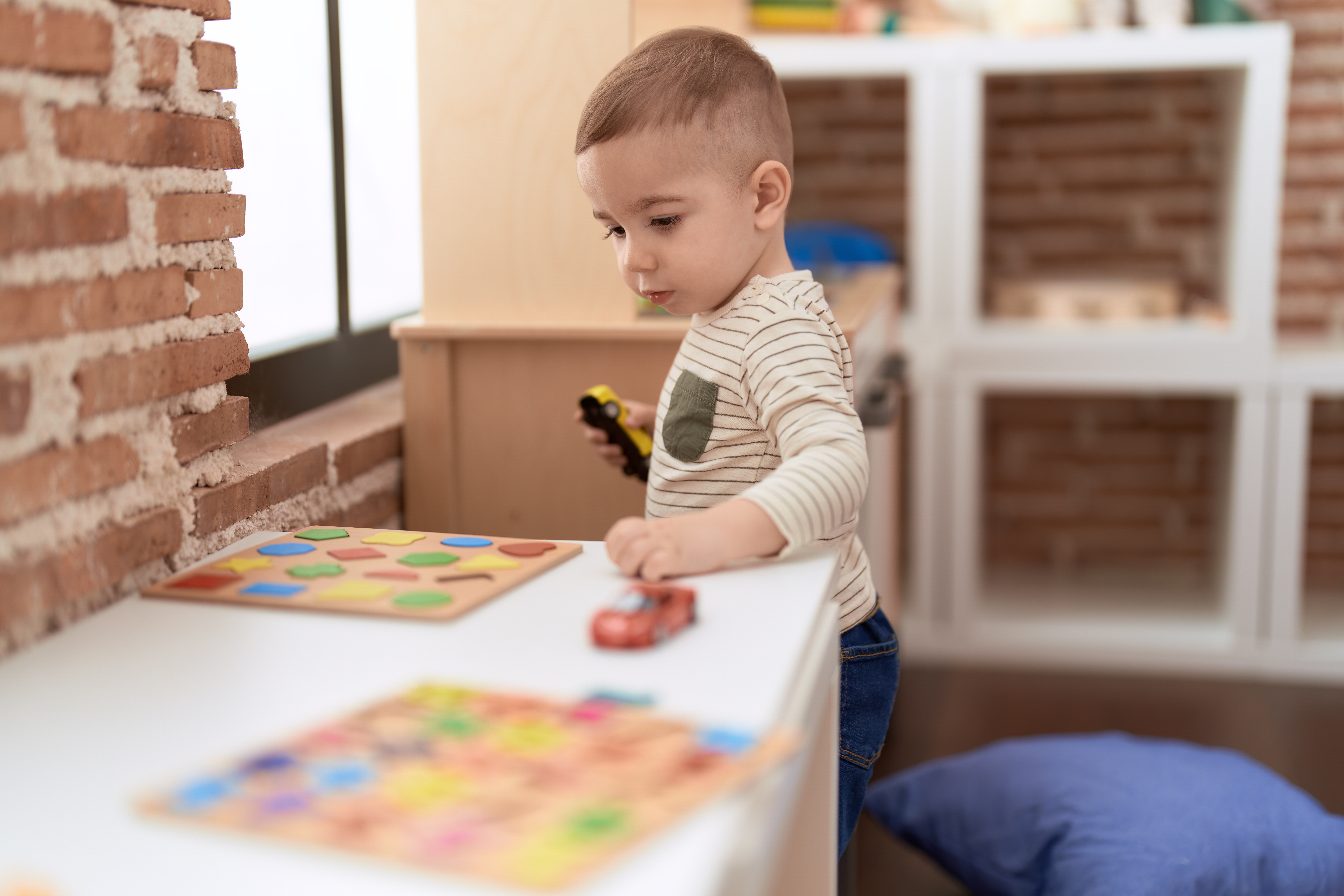

Cognitive Development
Older Toddlers (18 to 36 months)
Components and Developmental Indicators
Older Toddlers (18 to 36 months)
Components and Developmental Indicators
Developmental Indicators
CD Goal-1: Through their explorations, play, and social interactions, children use their senses to discover and construct knowledge about the world around them.
![]()
Explore and experiment with objects and materials to learn about their properties.
![]()
Experiment with safe tools to learn how they work (wooden hammer with pegs, sifter, funnel).
![]()
Put together multiple combinations of actions and objects (put toothpaste on brush and brush teeth).
CD Goal-2: Through their explorations, play, and social interactions, children recall information and apply it to new situations and problems.
![]()
Search for objects in several places, even when not seen recently.
![]()
Show they remember people, objects, and events (talk about them, act them out, point out similar happenings).
![]()
Show they remember the order of familiar events (finish a phrase in a story or song, get ready to go outdoors after snack).
![]()
Try multiple times to cause an effect or solve challenging problems, combining actions and behaviors used before (ask another child to help remove a lid with them after trying unsuccessfully themselves).
![]()
Repeat simple problem-solving strategies to find solutions to everyday problems.
![]()
Choose objects to represent something else with similar features during play (block for cell phone, large sheet for tent).
![]()
Perform more complex action after watching an adult (activate sound from toy, open a latch).
CD Goal-3: Through their explorations, play, and social interactions, children demonstrate the ability to think about their own thinking: reasoning, taking perspectives, and making decisions.
![]()
Notice and respond to others’ feelings and behaviors (hand a toy to another child as a play invitation).
![]()
Observe and imitate adult actions and adjusts interactions based on those observations (after seeing adult set table, put napkins on table).
![]()
Use words like “think,” “remember,” and “pretend.”
![]()
Talk about what they and other people want or like.
Developmental Indicators
CD Goal-4: Through their explorations, play, and social interactions, children count with understanding and use numbers to tell how many, describe order, and compare.
![]()
Use words or actions that show understanding of the concepts of “more,” “all,” as well as “none”.
![]()
Count to 5 with the support of an adult.
![]()
Understand the meaning of “one”.
![]()
Place items in one-to-one correspondence during play and daily routines (one spoon at each plate; one doll in each toy car).
![]()
Make a small group (1-3) with the same number of items as another group of items (take 3 balls from a basket after the teacher shows the group that she has 3 balls and asks each person to take the same number of balls).
CD Goal-5: Through their explorations, play, and social interactions, children demonstrate concepts about position, as well as identify and describe simple geometric shapes.
![]()
Respond to and begin to use words describing positions (in, on, over, under, etc.).
![]()
Name or match a few shapes.
![]()
Stack or line up blocks that are the same shape.
CD Goal-6: Through their explorations, play and social interactions, children compare, sort, group, organize, measure, and create simple patterns using concrete objects.
![]()
Use size and amount words to label objects, people, and collections (big truck, a lot of cookies, little baby).
![]()
Group objects into categories (cars with cars, plates separated from cups).
![]()
Recognize objects that are different but go together (such as shovel and pail or cup and plate).
CD Goal-7: Through their explorations, play, and social interactions, children use mathematical thinking to ask questions and solve problems.
![]()
Use observation and emerging counting skills (1, 2, 3) during play and other daily activities.
![]()
Match objects by shape, color, or size.
![]()
Match object to picture of object.
![]()
Match objects that have the same function (a brush and a comb or a bowl and a plate).
Developmental Indicators
CD Goal-8: As a result of their explorations and participation in simple investigations through play, children observe, describe, and demonstrate respect for living things, the environment, and the physical world.
![]()
Show curiosity and investigate the world of nature indoors and outdoors (roll in the grass, scratch frost on window).
![]()
Help adult with the care of living things (water plants, feed classroom pet).
![]()
Cause toys they are playing with to move and provide simple descriptions (“My train go fast!”).
![]()
Collect items that may share an attribute.
![]()
Classify things into groups but may overgeneralize (call all small animals “puppies”).
![]()
Describe using one word (hot, soft, big).
![]()
Observe and choose simple clothing for weather (mittens and boots when snowy).
CD Goal-9: As a result of their explorations and participation in simple investigations through play, children demonstrate their ability to use scientific inquiry by observing, manipulating objects, asking questions, making predictions, and developing generalizations.
![]()
Make simple scribbles, sounds, or movements to describe what they are seeing and experiencing.
![]()
Use simple tools to investigate objects (magnifying glass, ramps for rolling balls, spoons for digging) or to obtain a desired object (ruler to guide ball back from under shallow cabinet).
![]()
Try out different materials to create a structure.
![]()
Investigate differences between materials (sand, water, moving air).
![]()
Notice and comment on changes in materials when mixing and manipulating (paint, playdough, food ingredients).
![]()
Ask, “What’s that?”
Developmental Indicators
CD Goal-10: Through their explorations, play, and social interactions, children demonstrate an understanding of relationships, roles, and what it means to be a participating member of their families and the diverse groups/communities they belong to.
![]()
Intently watch and imitate other children and adults (try to swing a plastic bat they have seen an older child use).
![]()
Use play to show what they know about relationships and roles in families and other familiar contexts.
![]()
Talk about what others do during the day (“Mommy at work. Gramma at home.”).
![]()
Help with daily routines (put napkins out for lunch).
![]()
Seek out familiar playmates to sit next to when playing.
CD Goal-11: Through their explorations, play, and social interactions, children identify and demonstrate appreciation of similarities and differences between themselves and others.
![]()
Describe people who are similar and different based on characteristics such as age, gender, and other physical characteristics.
![]()
Show awareness of similarities and differences among people and families by taking on different roles during play.
Developmental Indicators
CD Goal-12: Children engage in a variety of creative activities for enjoyment and self-expression including play, visual arts, music, expressive movement, and drama.
![]()
Experiment and create 2D and 3D art with clay, crayons, markers, paint, and collage materials.
![]()
![]()
Make up simple nonsense songs, sign, chant, and move to music (twirl around and fall down, “march” by lifting knees high).
![]()
Talk or sing to themselves for comfort or enjoyment and express ideas and feelings through music and movement.
CD Goal-13: Children demonstrate an appreciation for different forms of art including visual arts, music, expressive movement, and drama.
![]()
Express delight in different forms of art (choose to look at a book with colorful photographs).
![]()
Participate in and use simple words to describe art, music, movement, drama, or other aesthetic experiences (talk about colors in a painting).

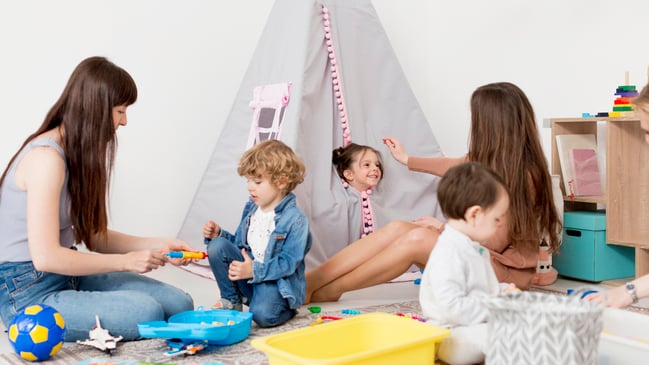
.jpg?width=649&name=close-up-child-enjoying-didactic-game%20(1).jpg)
